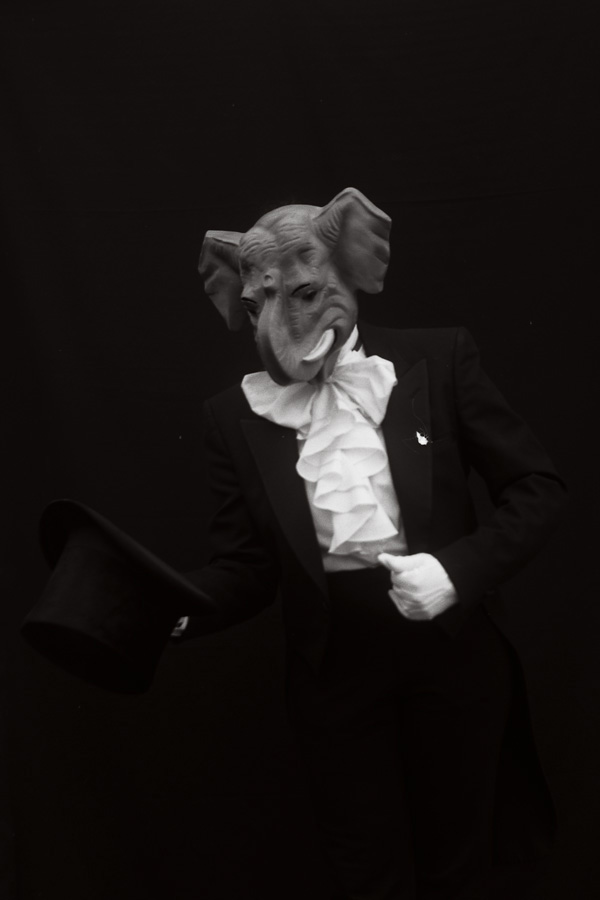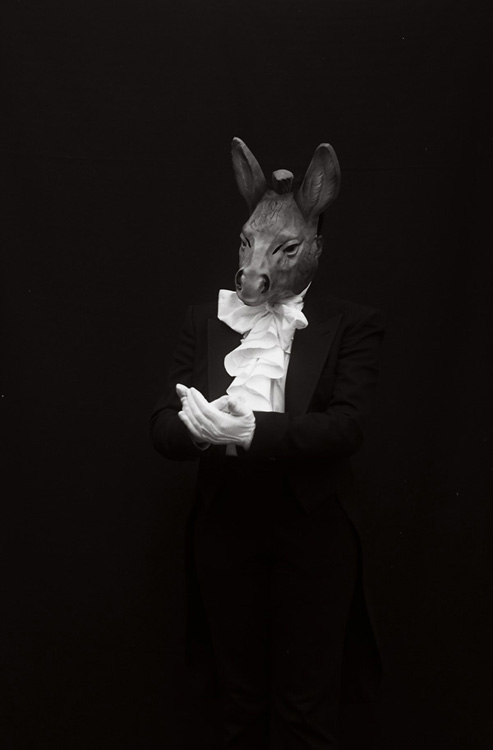Reconstruction 6.2 (Spring 2006)
Return to Contents»
Carrie Mae Weems. The Louisiana Project
30 April—23 June, 2005, Southeastern Center for Contemporary Art, Winston-Salem, NC

Missing Link, Liberty. Iris print, 41 ¼ x 29 ¼ in. framed.

Missing Link, Justice. Iris print, 41 ¼ x 29 ¼ in. framed.
<1> Louisiana was the point of departure for this latest project by Carrie Mae Weems. The wide open spaces and panorama views afforded by the Southeastern Center for Contemporary Art (SECCA) made for a particularly spatiotemporal experience: The viewer travels the gallery as on a journey, one which correlates to a larger narrative, also quite germane to historical space and time. A visual prelude includes two antiquated-like convex photo portraits of Napoleon and Thomas Jefferson. They flank a more contemporary image of a beautiful black woman peering out from a plantation house interior. Her thoughts are inscribed in graceful and flowing white font: “While sitting upon the ruins of your remains, I pondered the course of history.” Bookending this unlikely photographic trio are double-portraits of the artist in a patchwork blouse and skirt, gazing into a hand mirror as if in wonderment as to what it was that “so terrified” genteel folk of plantation times past.
<2> Was it the fear of the supposed brutishness of a “subhuman” species? In the latter 19th century, Darwin’s Origin of the Species had been so grossly distorted by some as to imply that African Americans might provide for its evolutionary “missing link.” The artist artfully challenges the legacies of such myth in a photo sextet that serves as a historical paradigm shift from oppression achieved via military and political might to one manufactured—that is, a psychological enslavement by means of cultural construction. An unidentified figure (the artist?) is disguised in variously humorous (yet not-so-humorous) animal masks, recalling the high pageantry of exclusive Mardi Gras balls in New Orleans. While the ape costume might point to an outmoded 19 th-century mythology, the ass and elephant—Missing Link, Justice and Missing Link, Liberty—provide for biting contemporary reference. Imagery juxtaposed in such a context suggests that the elaborate game of social masquerading of the past has only been recycled into a less noticeable (but more consciously disguised and ever more pernicious) present form.
<3> The video installation is one of the most entrancing arrangements ever experienced. Set to an engrossing piano score, it helps pull the viewer into the complex dance scenario that unfolds. The dancing quickly but subtly evolves from one of high society etiquette and tradition to a reverse scenario of slave and master. In the latter sequence a female in Napoleonic hat subjects a male first to seduction that then slowly mutates into an eroticized form of sadomasochistic punishment. A brief iconoclastic moment occurs when Weems blackens the screen entirely in order to softly voice a poem that is as eloquent as it is accusatory. (Good artists know the power of when to use the image as much as when to withhold it.) The omniscient witness reveals that she saw, among many other clandestine dealings, the “secrets of secret societies” and the “negotiations of the real world / conducted in a land of make believe.”
<4> The exhibition is made more universal by two separate photo series, both of which are very much set in the Southern present. The first shows Weems holding the hand mirror up for various white individuals in order that each might see their true visage. While she consoles one solemn individual, another seems to need more direct address in order to achieve the same authentic revelation. The final series focuses on scenes of Louisiana today: “historic” plantation houses, ostentatiously religious tombs (which, through the vestiges of time, now seem only to screech of the towering hypocrisy of legacies past), a Coors Light billboard expressly designed to target black youth in their own neighborhood, and unsettling industrial and chemical plant scenes along the Mississippi: Just what are Louisiana’s people liberated from these days?
<5> The exhibition was a gargantuan undertaking—make the viewer aware of a more objective history (one they may not have originally learned), tackle cultural constructions, relate the legacies of a particular place, explore power relationships between race and gender, and wake us up to various infectious notions of false liberation. Remarkably, Weems accomplishes all of these things handily while also managing a high degree of artistry; and her work is tremendously intellectual, but never pedantic. Word, image, and concept rarely go together so well. Further, her scenarios are applicable to many places, times, and situations (lest we think New Orleans is somehow the exception to the rule). Louisiana Project solidifies Weems’s greatest attribute—one all too uncommon in the fashionable world of contemporary art—her sincerity.
Larry M. Taylor
South Dakota State University, Brookings
